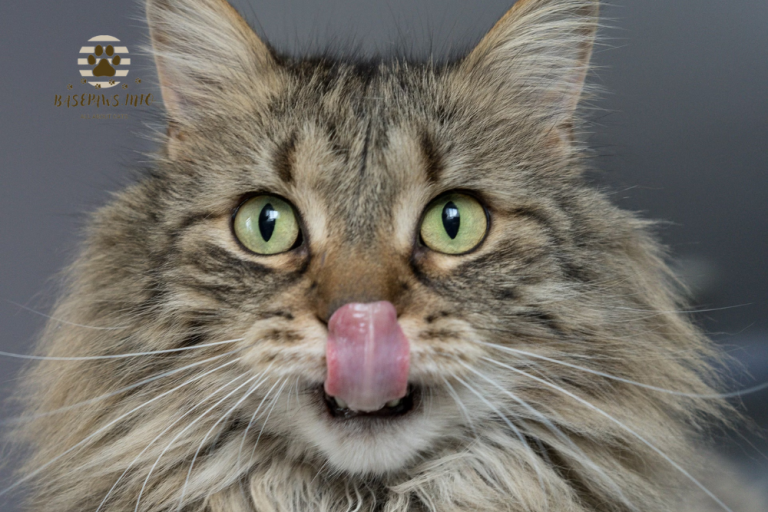Bath Time! Why and How You Should Bathe Your Cat
Introduction
As a cat owner, you may find yourself questioning whether your feline friend truly needs a bath. This concern often arises when your cat gets into something messy or has a medical condition that affects their ability to groom themselves. While cats are generally good at keeping themselves clean, there are specific circumstances where a bath might be beneficial. Understanding when and how to bathe your cat can alleviate your worries and ensure that your pet stays clean and healthy.
Cats naturally groom themselves, spending hours each day cleaning their fur. However, situations such as joint pain in older cats, skin issues, or accidental encounters with harmful substances may require intervention. Knowing how to recognize these situations can help you decide if your cat needs a bath. Additionally, having a clear step-by-step process for bathing your cat can make the experience less stressful for both you and your pet.
In this article, we will explore the importance of bathing your cat, the circumstances that may require a bath, and detailed steps on how to do it safely and effectively. By the end of this guide, you’ll be well-equipped to make informed decisions about your cat’s bathing needs.
The Importance of Bathing Your Cat
The Necessity of Bathing Cats
Bathing cats is not a routine requirement like it is for dogs, but it can be necessary in certain situations. Cats are typically clean animals that groom themselves effectively. However, there are instances where a bath may be beneficial for their health and well-being.
Do Cats Need Baths?
While cats do not usually need regular baths, some circumstances may warrant one. Understanding these circumstances is key to ensuring that your cat remains clean and comfortable.
Reasons Cats Might Need a Bath
Several situations may necessitate bathing your cat:
- Mobility Issues (Senior Cats): Older cats may have difficulty grooming themselves due to arthritis or other mobility issues. If your senior cat struggles to clean itself, a bath may be required.
- Safety/Emergency Situations: If your cat comes into contact with harmful substances, such as chemicals or oils, a bath is essential to remove these dangers from their fur.
- Messy Poop Booty: Sometimes, cats can have accidents that require more than a simple wipe-down. If your cat has a messy backside, a bath may be necessary for hygiene.
- Long Coat Care: Long-haired breeds are prone to mats and tangles. Regular baths can help keep their coats clean and manageable.
- Lack of Energy: Cats that are lethargic due to age or health issues may not groom themselves effectively, making a bath necessary.
- Wound Care: Following an injury, your veterinarian may recommend bathing as part of wound care. It’s crucial to follow their instructions carefully.
- Skin Conditions: Cats with skin conditions, such as allergies or infections, may need medicated baths as prescribed by a veterinarian.
- Weight Considerations: Overweight cats may struggle to groom certain areas of their bodies, making bathing helpful for cleanliness.
How to Tell if Your Cat Needs a Bath
You can identify if your cat requires a bath by observing the following signs:
- External Parasites: If your cat has fleas or ticks, bathing can help remove these pests.
- Stubborn Dirt: If your cat is particularly dirty and self-grooming isn’t sufficient, a bath may be necessary.
- Grooming Difficulties: If your cat is struggling to groom themselves due to age or health issues, they might need assistance.
- Long-Haired Cats: Long-haired breeds often require more care and may need baths to maintain their coat.
- Hairless Cats: Hairless breeds, such as Sphynx, need regular bathing to manage skin oils.
Do Cat Baths Help with Human Allergies?
Bathing cats can help reduce allergens in their fur, potentially alleviating some allergy symptoms in sensitive humans. Regular grooming and bathing can minimize the amount of dander and hair in your home.
How Often Should You Bathe a Cat?
Most cats do not need to be bathed more than once every few months. However, if your cat encounters a situation that necessitates a bath, you should follow your veterinarian’s advice regarding frequency.
Should You Bathe Indoor Cats?
Indoor cats may require fewer baths than outdoor cats, but they can still benefit from occasional cleaning, especially if they encounter messes or skin issues.
Preparing to Bathe Your Cat
Supplies for Bathing Your Cat
Before you start bathing your cat, gather the following supplies:
| Supplies | Purpose |
| Cat-safe shampoo | Cleans without irritating their skin |
| Towels | For drying your cat after the bath |
| Non-slip mat | Helps your cat feel secure in the tub |
| Brush | To remove loose fur before bathing |
| Cup for rinsing | For easy rinsing of your cat |
Tips for Getting Your Cat Comfortable with Baths
- Trim Your Cat’s Nails: This will help prevent scratches during the bathing process.
- Brush Their Coat: This removes loose fur and debris, making bathing easier.
- Have Supplies Ready: Gather all necessary items beforehand to minimize stress.
- Pre-warm the Water: Ensure the water is at a comfortable temperature.
- Patience is Key: Approach the bathing process with a calm demeanor to help soothe your cat.
How to Bathe a Cat: Step-by-Step Tips
Bathing a cat can be straightforward with proper preparation. Follow these steps to ensure a smooth experience for both you and your feline friend.
Filling the Sink or Tub
Start by selecting a sink or bathtub with a non-slip surface. Fill it with warm water, just enough to wet your cat without submerging them. Aim for a comfortable temperature, avoiding extremes. If available, a handheld sprayer can help control the water flow during rinsing.
Lowering the Cat into Water
Gently lower your cat into the water while supporting their body. Speak soothingly to help them feel calm. Focus on wetting their body, avoiding the head and face initially to prevent panic.
Rinsing the Cat
Use the sprayer or a cup to wet your cat’s fur thoroughly, being careful not to spray directly into their face. Ensure you avoid getting water in their ears or eyes. This stage prepares them for shampooing while keeping them comfortable.
Applying Shampoo
Choose a cat-specific shampoo. Apply a small amount to your hands and gently massage it into your cat’s fur from neck to tail, avoiding the face. Pay special attention to dirty or matted areas, ensuring even coverage.
Rinsing Thoroughly
Rinse all the shampoo out using warm, clean water. Make sure no residue is left behind, as this can cause skin irritation. Take your time to ensure a thorough rinse for your cat’s comfort.
Drying Your Cat
Use a soft towel to pat your cat dry, avoiding rubbing to prevent tangles. If your cat tolerates it, use a low-heat hairdryer from a distance to help dry their fur. Monitor your cat for signs of distress throughout the drying process.
Do Cats Need Conditioner?
Most cats don’t require conditioner, but long-haired or dry-coated cats may benefit from a cat-safe product. Follow the instructions carefully and rinse well to keep their coat healthy.
Dealing with Challenging Cats
How to Bathe an Aggressive Cat
If your cat is aggressive, consider using a calm voice and gentle movements. You may need to consult a professional groomer for assistance.
How to Bathe a Cat That Hates Water
For cats that dislike water, consider using a damp cloth to spot clean instead of a full bath. Gradually introduce them to water using positive reinforcement.
Behavioral Considerations
Potential Trauma from Bathing
Bathing can be stressful for some cats, leading to potential trauma. Always monitor your cat’s behavior and comfort levels.
Impact on Human-Animal Bond
Forcing a cat into a bath may impact the bond between you and your pet—approach bathing with care and patience to maintain trust.
Exceptions and Special Cases
Hairless Cats (Sphynx)
Hairless cats require regular baths to remove excess oils. Follow specific guidelines for their care.
Routine Skin Care Needs
Consult your veterinarian for guidance on routine skin care, especially for cats with specific health concerns.
Tips for Bathing Sphynx Kittens
Sphynx kittens may require more frequent bathing. Use gentle products and ensure they are warmed up after bathing.
Alternative Options to Bathing
Bathing a cat isn’t always necessary, and there are several alternative methods to keep your feline friend clean and healthy. Here are some effective options to consider:
Regular Grooming
Regular grooming is essential for maintaining your cat’s cleanliness. Brushing your cat helps remove loose fur, dirt, and dander while preventing mats and tangles, especially in long-haired breeds. It also stimulates their skin and distributes natural oils, promoting a healthy coat.
Spot Cleaning
For minor messes, spot cleaning can be a quick and effective solution. Use a damp cloth or pet-safe wipes to clean specific areas like paws, the rear end, or any dirty spots. This method is less stressful for your cat and can often address cleanliness without a full bath.
Using Cat-Safe Shampoo
If your cat has specific skin conditions or allergies, consider using a cat-safe dry or waterless shampoo. These products can clean the coat without the need for water, making it a less traumatic experience for your pet. Follow the product instructions for the best results.
Professional Grooming
If your cat dislikes water or you’re concerned about bathing them yourself, consider taking them to a professional groomer. Groomers have experience and techniques to clean and maintain your cat’s coat effectively, ensuring they remain comfortable throughout the process.
While most cats don’t need regular baths, it’s important to recognize when a bath is necessary for their health and hygiene. By preparing adequately and approaching the bathing process with patience and understanding, you can make the experience less stressful for your feline friend. Always remember to reward your cat with treats or affection afterward to create a positive association, reinforcing the bond between you and ensuring that your cat feels secure and loved.







